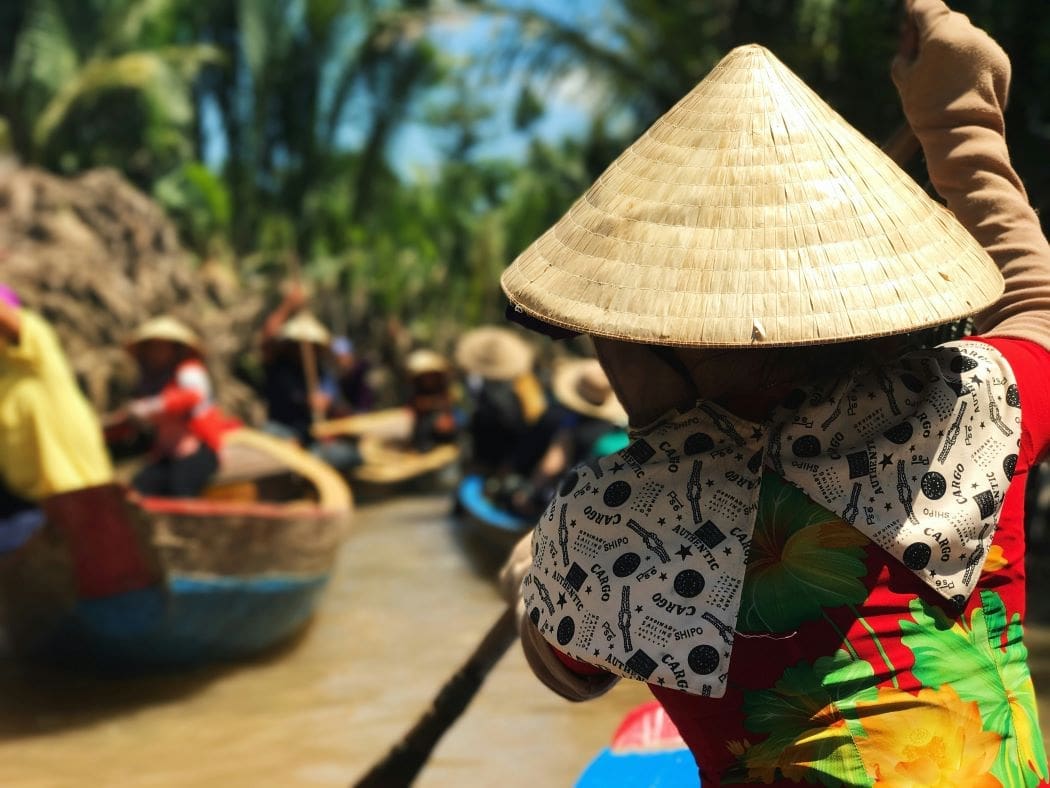By: Shauna Downs, Rutgers University | Swetha Manohar, International Food Policy Research Institute | Serey Sok and Nyda Chhinh , Royal University of Phnom Penh | Jessica Fanzo, Columbia University | 360info
Communities along the Mekong River are already seeing their food access shrink as the climate worsens. Smart imminent solutions could ease the burden.
Along the Mekong River basin, many of the approximately 65 million people who rely on it for food, water and nutrition are struggling.
High temperatures and drought have killed animals reared by locals and vegetables they planted for household consumption.
For those who relied on collecting food from smaller water bodies, such as ponds and canals surrounding the river and lakes, they had to spend more time collecting food and had access to fewer species.
For some, collecting food meant the difference between having the money or not, to pay for their children’s school fees or not, since it meant that they were less reliant on purchasing food from markets.
The Mekong River ecosystem supports people living in six countries – Cambodia, China, Laos, Myanmar, Thailand and Vietnam. It is one of the most vulnerable places on Earth to climate change.
A confluence of upstream damming, drought and increased temperatures are impacting its flow, salinity, species richness and ability to support the people whose lives depend on it.
Access to food
One-third of all food production globally depends on rivers, but the role of rivers as arteries of food systems supporting the harvest, collection, production, sale and transport of food is often overlooked.
So too are the river-dependent livelihoods and income-generating activities that they support.
Our recent work in Cambodia focused on understanding food access among climate-vulnerable populations that live near the Mekong River.
Qualitative interviews and focus groups with riverine community members underscored that food acquired from Tonlé Sap lake, the Mekong River and their surrounding floodplains and water bodies still act as critical food and nutrition safety nets.
These foods are diverse and provide important nutrients that can help reduce the risk of malnutrition. In one river commune alone, more than 34 species of animal source foods and 65 unique types of micronutrient-rich fruits, vegetables and legumes were identified.
Trust in food
In these communities, the issue wasn’t just the perceived impacts of climate on the quantity of food they could access, it was also viewed as affecting their food quality.
People prefer to eat locally produced foods that they trust. Local food is seen to be produced using better agricultural practices with fewer chemicals.
As it becomes harder for these communities to access their local foods, it means relying on foods from the market, where they don’t always trust the production practices of many of these foods.
This can lead people to shift away from consuming nutrient-rich foods that have historically been important parts of their diets.
While direct impacts of climate variability and shocks are contributing to reduced food access in the Mekong River region, there are also indirect impacts.
For example, extreme heat reduces people’s ability to work outside fishing, farming their fields or collecting food in ponds and canals. This deprives people of the ability to make a living and limits their ability to access food from those spaces. This can have knock-on effects such as shifting livelihoods and migration to urban areas.
Working with communities threatened by climate change, who are inextricably linked to the rivers and the land, to identify solutions to help ensure food, water and nutrition security, will lead to solutions grounded in reality.
Top-down solutions that don’t consider how people in these communities truly live and what drives their decision-making are unlikely to be as impactful.
Regional governments and environmental authorities have begun implementing regulations that promote the conservation of these waterways and their surrounding ecosystems, including forests, to combat the declines in fisheries and other food sources. But the work to be done goes beyond the waterways.
Training farmers
Farmers can be given more access, and better quality access, to training and education that helps them adapt to a changing climate.
Giving them knowledge about topics such as choosing climate resilient crops and varieties, planting cover crops, intercropping (cultivating two sorts of crop on the same land) and crop rotation to improve soil health, shifting planting schedules or adopting regenerative agriculture practices are all ways to help farmers amid tough conditions.
These should be combined with scaling-up climate services such as early warning systems, which provide farmers and their communities with environmental information that allows them to react fast to potential weather and climate threats.
At the market level, more transparency in the source and production practices of food would help improve people’s trust in the food they purchase.
This might involve investing in testing by government agencies to better measure food safety risks or creating food labeling systems to help people make more informed food choice decisions.
To prevent food loss, post-harvest management at the market level could be improved. This could include upgrading market infrastructure and training vendors to ensure perishable foods are fresh, safe and of quality, especially as temperatures increase.
Coupling these solutions with social protection schemes responsive to shocks, as well as livelihood protection programs, will defend river-dependent livelihoods against reduced incomes and increasing food prices, an inevitable consequence of climate variability and change.
There are solutions that can help communities in the Mekong adapt to drought and climate change. But in order to see sustained uptake and implementation, the communities most directly affected should be included at the forefront of problem-solving and solution implementation.
***
Shauna Downs is an Associate Professor in the Department of Health, Behavior, Society and Policy at Rutgers School of Public Health who conducts food systems research aimed at improving the diets of marginalised populations globally.
Swetha Manohar is an Associate Research Fellow in the Nutrition, Diets and Health Unit at the International Food Policy Research Institute who conducts research on agriculture-nutrition linkages and multi sectoral programming and policy to improve nutrition and food security with special consideration to issues of equity.
Serey Sok is a Professor in the Research Office at the Royal University of Phnom Penh and has extensive experience in conducting research in the Mekong region.
Nyda Chhinh is a Professor in the Department of Economic Development at the Royal University of Phnom Penh who conducts research on climate change and agriculture in Cambodia.
Jessica Fanzo is a Professor of Climate and Food at Columbia University’s Climate School who undertakes research on the interactions across food systems and climate change and the potential paths towards improving food system sustainability and adaptation.
Originally published under Creative Commons by 360info™.
Featured image credit: Anne Lin | Unsplash




